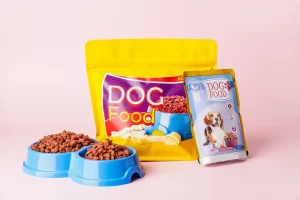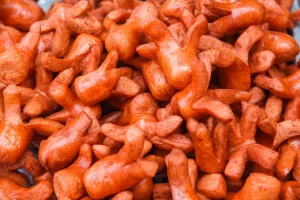Quenching the direct cross-linking polymerization of Carboxymethyl Cellulose (CMC) and starch is a critical step in controlling the properties of the final polymer product. This process involves abruptly stopping the polymerization reaction to prevent over-cross-linking, which can lead to undesirable properties in the polymer. Understanding the chemistry of CMC, starch, and their cross-linking process is essential for effectively quenching the reaction.
Understanding the Cross-Linking Reaction
- CMC and Starch Chemistry: CMC is a water-soluble derivative of cellulose with carboxymethyl groups, while starch is a natural polysaccharide composed of amylose and amylopectin. Both are capable of undergoing polymerization reactions.
- Cross-Linking Agents: The cross-linking of CMC and starch often involves cross-linking agents like epichlorohydrin, glutaraldehyde, or citric acid. These agents form bridges between the polymer chains of CMC and starch, enhancing properties like mechanical strength and water resistance.
- Reaction Conditions: The polymerization is typically conducted in aqueous solution and can be catalyzed by acids, bases, or specific enzymes. Temperature, pH, and reaction time are key parameters influencing the extent of cross-linking.
Methods to Quench the Polymerization
- Rapid Cooling: Lowering the temperature of the reaction mixture rapidly can effectively stop the polymerization. This method works by reducing the kinetic energy of the reactants, thereby slowing down the reaction rate.
- pH Adjustment: Altering the pH of the reaction mixture can deactivate the catalyst or react with the cross-linking agent. Adding an acid or base to shift the pH to a level where the cross-linking agent is less reactive can help quench the reaction.
- Dilution with Solvents: Diluting the reaction mixture with a solvent, typically water, decreases the concentration of the reactants and slows down the reaction. This method is effective but may require subsequent steps to concentrate and purify the polymer.
- Chemical Stoppers: Adding a chemical that reacts with the cross-linking agent or the active sites on the polymer chain can stop the reaction. These stoppers, or quenching agents, should be chosen based on their reactivity with the specific cross-linking agent used.
- Removal of the Cross-Linking Agent: Physically removing the cross-linking agent from the reaction mixture, either through filtration, dialysis, or another separation technique, can halt the cross-linking process.
Considerations for Effective Quenching
- Selection of Quenching Method: The choice of quenching method depends on the specific characteristics of the cross-linking reaction, including the type of cross-linking agent and the desired properties of the final polymer.
- Control of Reaction Parameters: Careful control of reaction parameters such as temperature, pH, and concentration is crucial for effective quenching.
- Safety and Environmental Concerns: Safety should be a priority, especially when dealing with reactive chemicals or drastic changes in reaction conditions. Environmental impact, particularly when using chemical stoppers or solvents, should also be considered.
- Post-Quenching Processing: After quenching, the polymer may require further processing, such as washing, drying, or additional chemical modifications to achieve the desired properties.
Conclusion
Quenching the direct cross-linking polymerization of CMC and starch is a nuanced process that requires a deep understanding of the reaction mechanism and careful control of the reaction conditions. Techniques such as rapid cooling, pH adjustment, dilution, use of chemical stoppers, and physical removal of the cross-linking agent can be employed to effectively halt the polymerization process. The choice of quenching method should be tailored to the specifics of the reaction and balanced with considerations of safety, environmental impact, and the desired characteristics of the final polymer product.





